Potomac Park is a protected area located in Washington, D.C., and is home to a variety of avian species. This park is a haven for birds, providing habitat for a diverse array of species.
The park’s native trees, shrubs, and grasses provide food and shelter for the birds, and its wetlands and rivers attract a wide variety of waterfowl and other aquatic birds.
From songbirds to raptors, Potomac Park offers birders a chance to observe and appreciate a variety of bird species in their natural habitat.
1. Eastern Bluebird
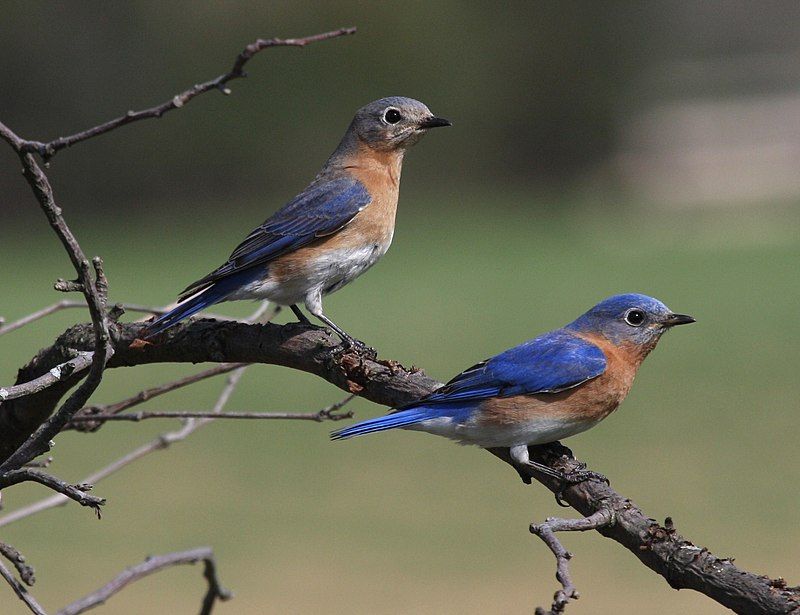
The eastern bluebird is a small migratory thrush native to North America. It is found in a variety of open habitats, including woodlands, farmlands, and orchards.
The male eastern bluebird has a bright blue plumage, which is quite easy to spot when perched on a wire or open branch. This makes the species a favorite among birders, who enjoy watching and observing its distinctive coloring.
The eastern bluebird can be seen in North America during the breeding season when it migrates to its chosen habitats. During this time, it primarily feeds on insects, fruits, and berries.
The eastern bluebird is a beloved species and is an important part of the North American ecosystem.
| Kingdom | Animalia |
| Phylum | Chordata |
| Class | Aves |
| Order | Passeriformes |
| Family | Turdidae |
| Genus | Sialia |
| Species | S. sialis |
2. Baltimore Oriole
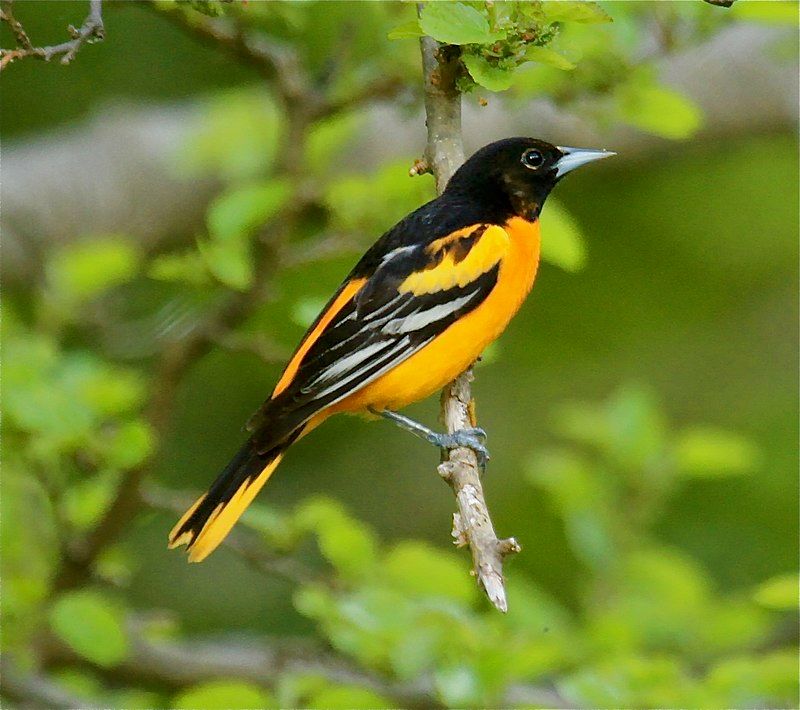
The Baltimore oriole is a small icterid blackbird that is native to eastern North America. It is a migratory bird, meaning that it moves from one region to another seasonally.
The male Baltimore oriole has bright orange and black coloring, which is thought to have inspired its name. The colors are reminiscent of the coat-of-arms of Lord Baltimore, a 17th-century British noble.
The Baltimore oriole is a common sight in the summertime when it migrates to the United States for breeding. In the wintertime, it can be found in Central and South America.
The Baltimore oriole is an important member of the ecosystem, as it helps to control insect populations and pollinate plants. Its bright colors also make it an important part of the landscape, as it brightens up its surroundings with a splash of vibrant color.
| Kingdom | Animalia |
| Phylum | Chordata |
| Class | Aves |
| Order | Passeriformes |
| Family | Icteridae |
| Genus | Icterus |
| Species | I. galbula |
3. Great Blue Heron
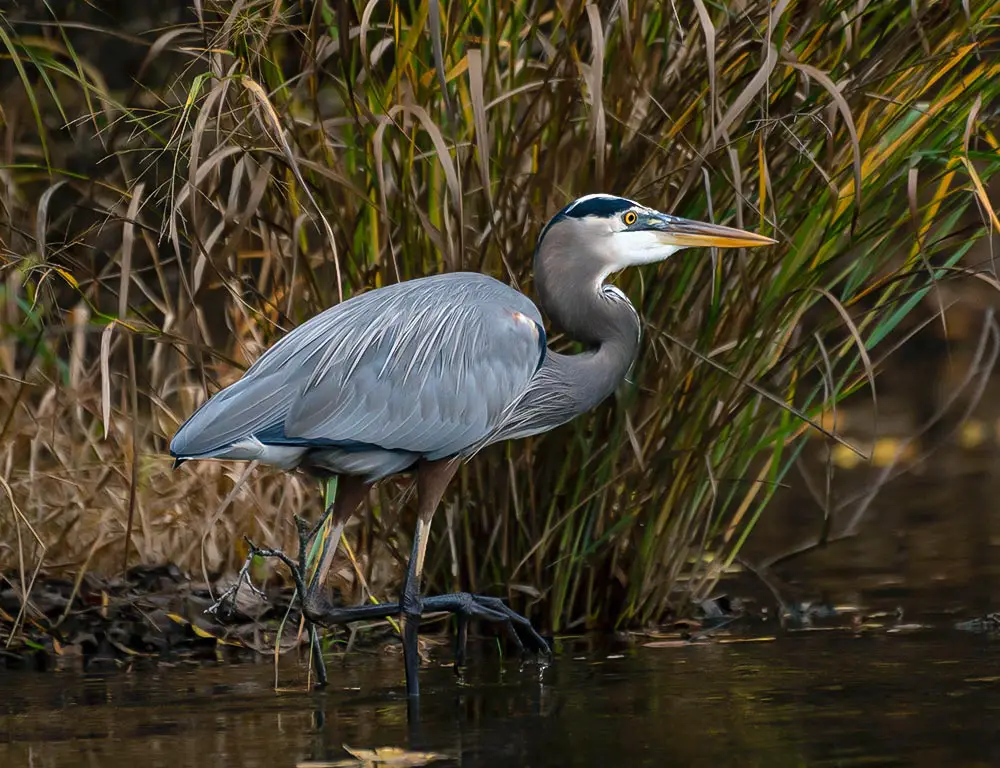
The great blue heron is a majestic bird that can be found in many parts of the Americas. It is a large wading bird and belongs to the heron family Ardeidae.
This species is quite common in the vicinity of open water and wetlands throughout North and Central America, as well as in the northwestern parts of South America, the Caribbean, and the Galápagos Islands.
The great blue heron is a large bird, measuring up to four and a half feet in height and weighing up to seven pounds.
Its wingspan can reach up to six feet, allowing it to cover great distances in search of food. Its feathers are a deep blue-gray color, except for its head, which is white with a dark gray patch on the back.
The beak is long and pointed, perfect for catching small fish, and the legs are long and thin, allowing the bird to wade through shallow waters. The great blue heron is a solitary bird and is usually seen alone or in small groups.
It is a migratory species, often flying south for the winter. It feeds mainly on small fish, crustaceans, and amphibians, such as frogs and salamanders.
It also eats small mammals, insects, and even snakes, if given the opportunity. The great blue heron is a beautiful and captivating bird, and it is a fascinating sight to behold.
Its presence near open water and wetlands serves as a reminder of the importance of preserving these important ecosystems.
| Kingdom | Animalia |
| Phylum | Chordata |
| Class | Aves |
| Order | Pelecaniformes |
| Family | Ardeidae |
| Genus | Ardea |
| Species | A. herodias |
4. Red-winged Blackbird
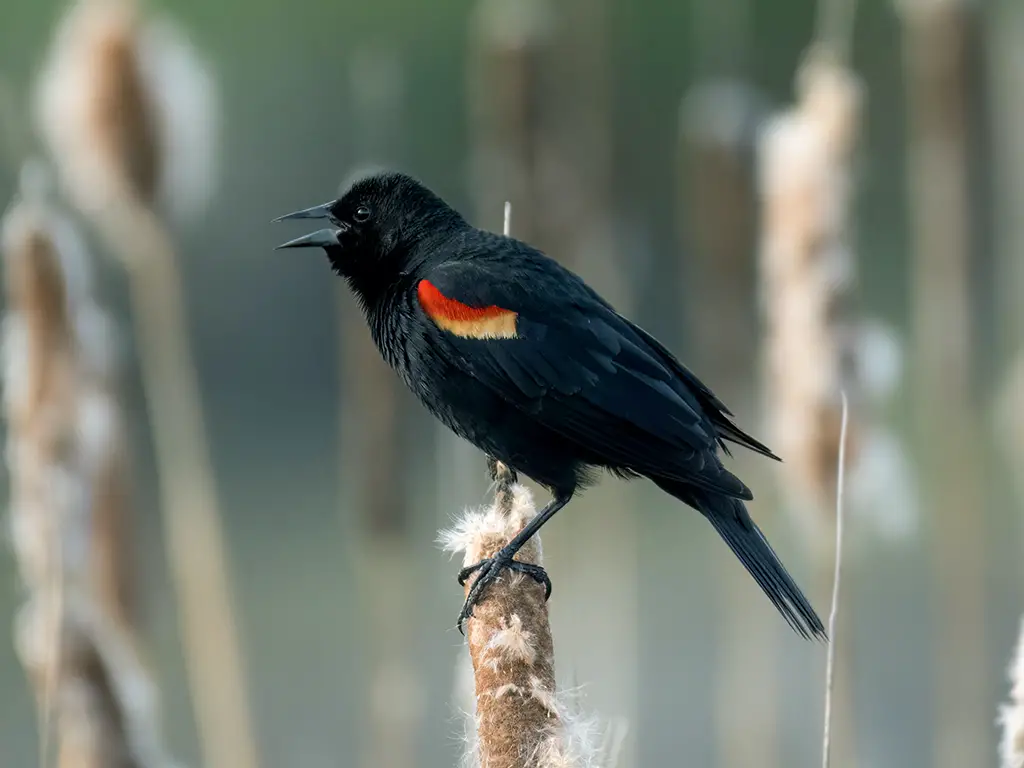
The red-winged blackbird is a type of songbird belonging to the family Icteridae. It is found in nearly every part of North America and much of Central America. This species is a medium-sized bird with a black body, a red shoulder patch, and yellow wing bars.
The male red-winged blackbird is particularly distinctive, with its bright red epaulets and yellow wing bars.
It is a common sight in both rural and urban habitats, often seen perched on fence posts or flying overhead in large flocks. The red-winged blackbird is an omnivore, feeding on a wide variety of insects, seeds, berries, and other plant matter.
During the breeding season, it is a territorial bird, and the male will often be seen singing from a high perch to defend its territory. The red-winged blackbird is an important part of many ecosystems, as it helps to control insect populations.
It is also an important seed disperser, helping to spread the seeds of many species of plants. Overall, the red-winged blackbird is an iconic species, found throughout much of North and Central America.
It is a valuable part of many ecosystems, and its unique and striking appearance makes it a favorite of birdwatchers and photographers alike.
| Kingdom | Animalia |
| Phylum | Chordata |
| Class | Aves |
| Order | Passeriformes |
| Family | Icteridae |
| Genus | Agelaius |
| Species | A. phoeniceus |
5. Bald Eagle
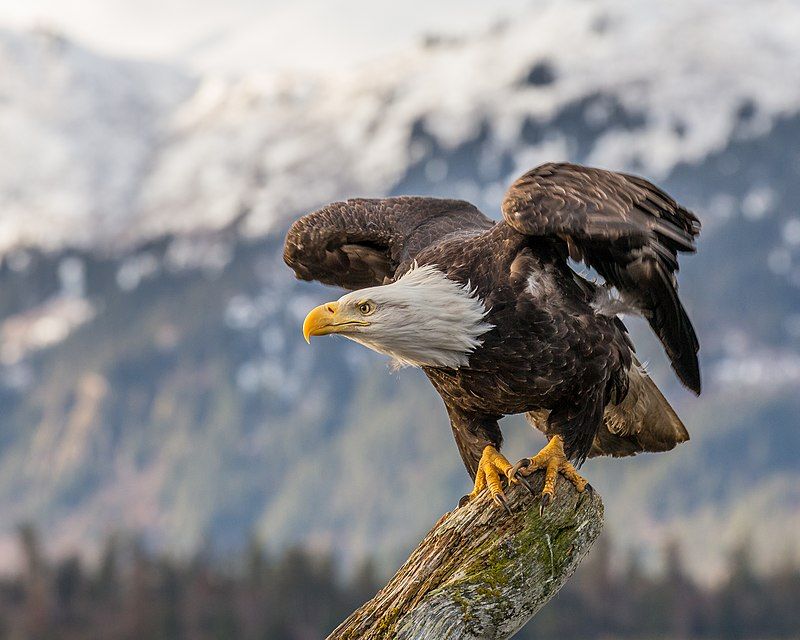
The bald eagle is a majestic bird of prey native to North America. It is a sea eagle, meaning that its habitat is mostly found near water and it will often feed on fish.
The bald eagle has two known subspecies and is part of a species pair with the white-tailed eagle, which inhabits the same type of habitat as the bald eagle in the Palearctic region.
Both birds of prey share many similarities, such as size, coloration, and diet, but the bald eagle is much more common in North America than the white-tailed eagle is in the Palearctic region.
The bald eagle is an impressive bird with a wingspan of up to 8 feet and a weight of up to 14 pounds. It is easily recognizable due to its white head and tail, as well as its dark brown body.
It has a sharp, hooked beak and yellow talons, perfect for catching and consuming its prey. The bald eagle primarily feeds on fish, as well as small mammals, waterfowl, and carrion.
It will also scavenge for food, taking advantage of other animals’ leftovers. The bald eagle is an important symbol of the United States, featured prominently in its national seal and coat of arms.
It is respected for its beauty and strength and is admired for its tenacity and intelligence. The bald eagle is protected by the Bald and Golden Eagle Protection Act, and its population is slowly increasing in North America due to conservation efforts.
| Kingdom | Animalia |
| Phylum | Chordata |
| Class | Aves |
| Order | Accipitriformes |
| Family | Accipitridae |
| Genus | Haliaeetus |
| Species | H. leucocephalus |
6. Northern Cardinal
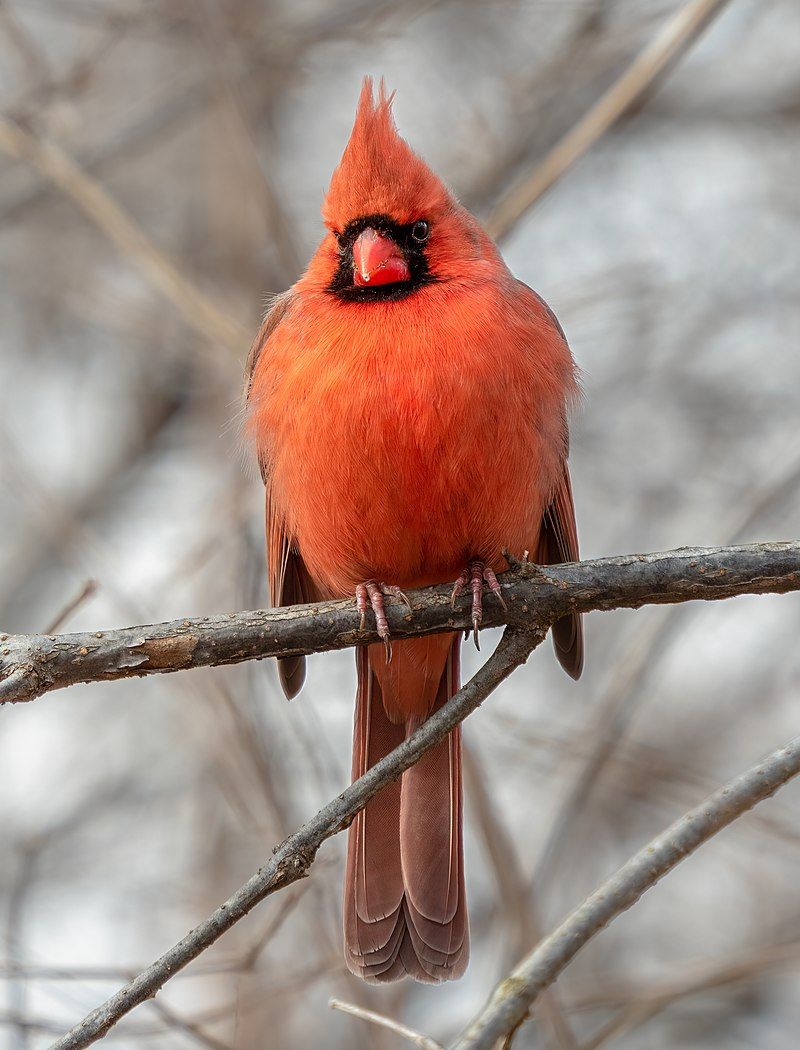
The northern cardinal is a type of bird that is native to North America. It is known by a variety of different names, such as the redbird, common cardinal, red cardinal, or just cardinal.
It belongs to the genus Cardinalis which includes other species of cardinals, such as the vermillion cardinal and the crested cardinal. The northern cardinal is identifiable by its bright red plumage, black face mask, and white accents on its wings and tail feathers.
It is also known for its cheerful song which often sounds like a loud “cheer, cheer, cheer” or “birdie, birdie, birdie”. Its diet consists of seeds, fruits, and insects, and it is often found in woodlands, gardens, and parks.
The northern cardinal is a very popular bird in North America, and its bright red color has long been a symbol of joy and luck.
| Kingdom | Animalia |
| Phylum | Chordata |
| Class | Aves |
| Order | Passeriformes |
| Family | Cardinalidae |
| Genus | Cardinalis |
| Species | C. cardinalis |
7. American Robin

The American robin is a migratory bird that belongs to the true thrush genus and Turdidae, which is a part of the larger thrush family. The bird was named after the European robin because of its reddish-orange breast, which is similar to the European robin’s.
Despite the similar appearance, the two species are not closely related; the European robin belongs to the Old World flycatcher family. The American robin can be found in North America, while the European robin can be found in Europe and parts of Asia.
The American robin is a medium-sized bird with grayish-brown upperparts and a reddish-brown breast. It has a black head and a white eye ring, and its bill is yellow. It is a common sight in gardens and woodlands, and its diet consists mainly of insects, worms, and fruit.
| Kingdom | Animalia |
| Phylum | Chordata |
| Class | Aves |
| Order | Passeriformes |
| Family | Turdidae |
| Genus | Turdus |
| Species | T. migratorius |
8. Red-Bellied Woodpecker
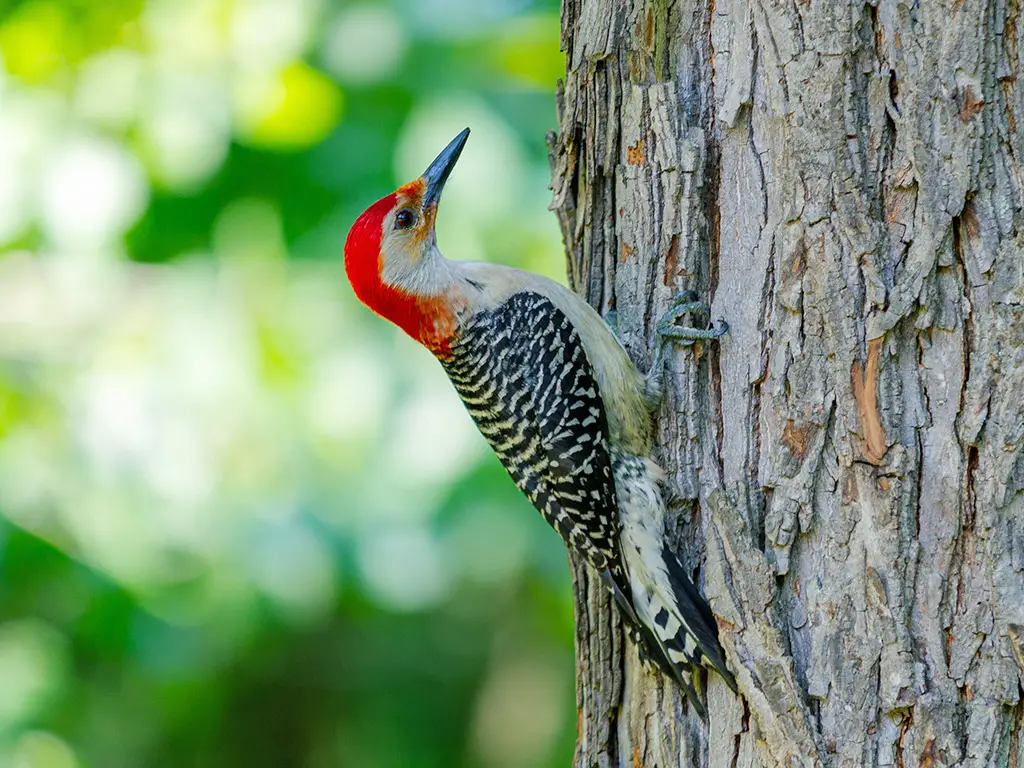
The red-bellied woodpecker is a species of bird belonging to the Picidae family, which includes other woodpeckers and related species. It is a medium-sized bird, typically measuring between 19 and 21 cm in length.
It can be identified by its distinctive red head and neck, and its grey back and wings. The red-bellied woodpecker is native to the eastern United States, where it can be found in a range stretching from as far south as Florida to as far north as Canada.
It breeds throughout this region, although it is not found in some of the colder northern areas. The red-bellied woodpecker is generally found in deciduous or mixed forests and wooded urban areas.
It feeds on insects, nuts, and fruit, and is often seen foraging on tree trunks and branches for food. This species is also known to feed on suet, peanut butter, and other foods provided by humans.
The red-bellied woodpecker is a social species, often forming pairs or small groups when foraging. It is also known to join mixed-species flocks, such as those composed of other woodpecker species, jays, and chickadees.
During the breeding season, the red-bellied woodpecker can be heard vocalizing with its loud, distinctive call. Overall, the red-bellied woodpecker is a common species across its range and is not currently listed as threatened or endangered.
It is a familiar sight across much of the eastern United States, and can often be seen in backyards and parks..
| Kingdom | Animalia |
| Phylum | Chordata |
| Class | Aves |
| Order | Piciformes |
| Family | Picidae |
| Genus | Melanerpes |
| Species | M. carolinus |
9. Red-Tailed Hawk
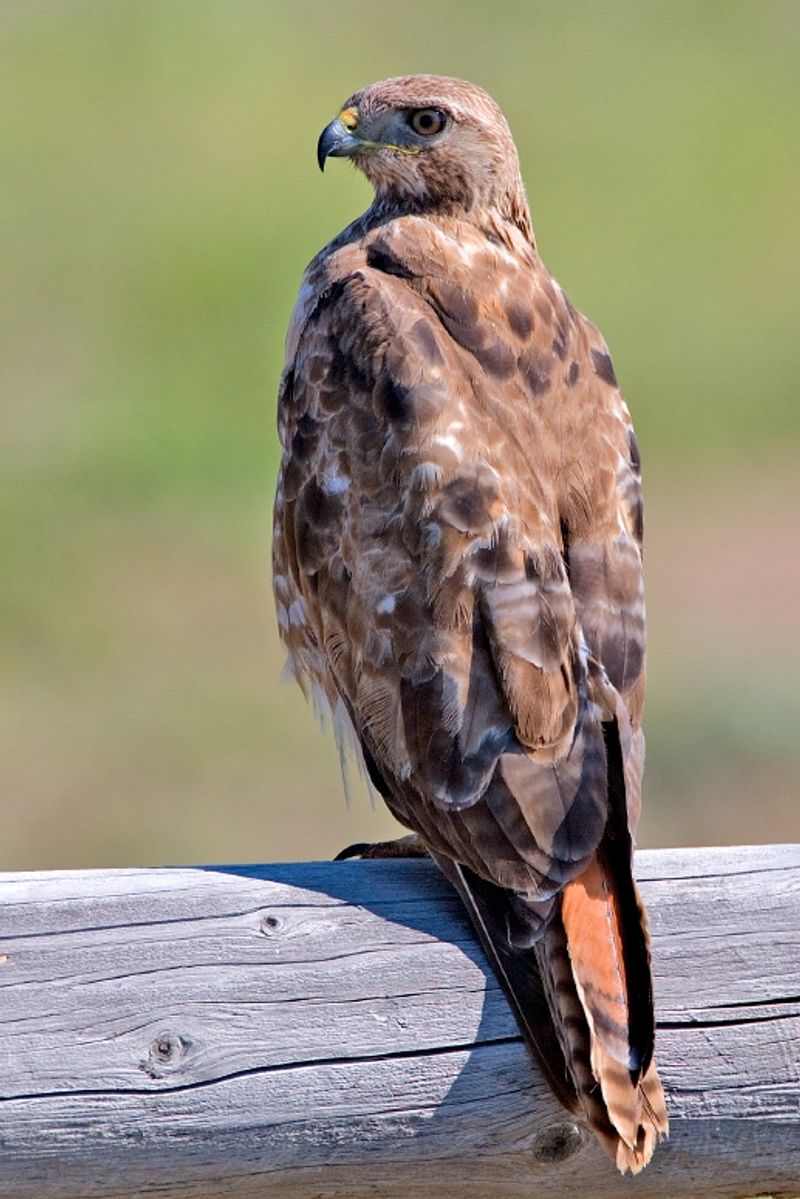
The red-tailed hawk is a majestic bird of prey found throughout most of North America, from the cold climates of Alaska and Canada to the warmer climates of Panama and the West Indies.
It is one of the most common species of Buteo and is found in many different habitats, such as open fields, grasslands, and woodlands. The species is easily recognizable by its reddish-brown tail feathers that give it its name.
The red-tailed hawk is a diurnal bird, meaning it is active throughout the day. It has powerful talons and a sharp beak that it uses to capture and eat its prey.
These birds mainly feed on small mammals, such as mice, voles, and ground squirrels, and they will also hunt birds, reptiles, and amphibians.
They often hunt from a perch, scanning the ground below for potential prey. The red-tailed hawk is a monogamous species that typically mate for life. During the breeding season, the male and female will build a large nest in a tree, often high up in the canopy.
The female typically lays 2-4 eggs in the nest, which are incubated for 28-35 days.
The chicks are then cared for by both parents until they are old enough to fledge, or fly away from the nest. The red-tailed hawk is a widespread species that can be found in a variety of habitats throughout North America.
Its wide range, large population size, and general lack of threats make this species a conservation success story.
| Kingdom | Animalia |
| Phylum | Chordata |
| Class | Aves |
| Order | Accipitriformes |
| Family | Accipitridae |
| Genus | Buteo |
| Species | B. jamaicensis |
10. Downy Woodpecker
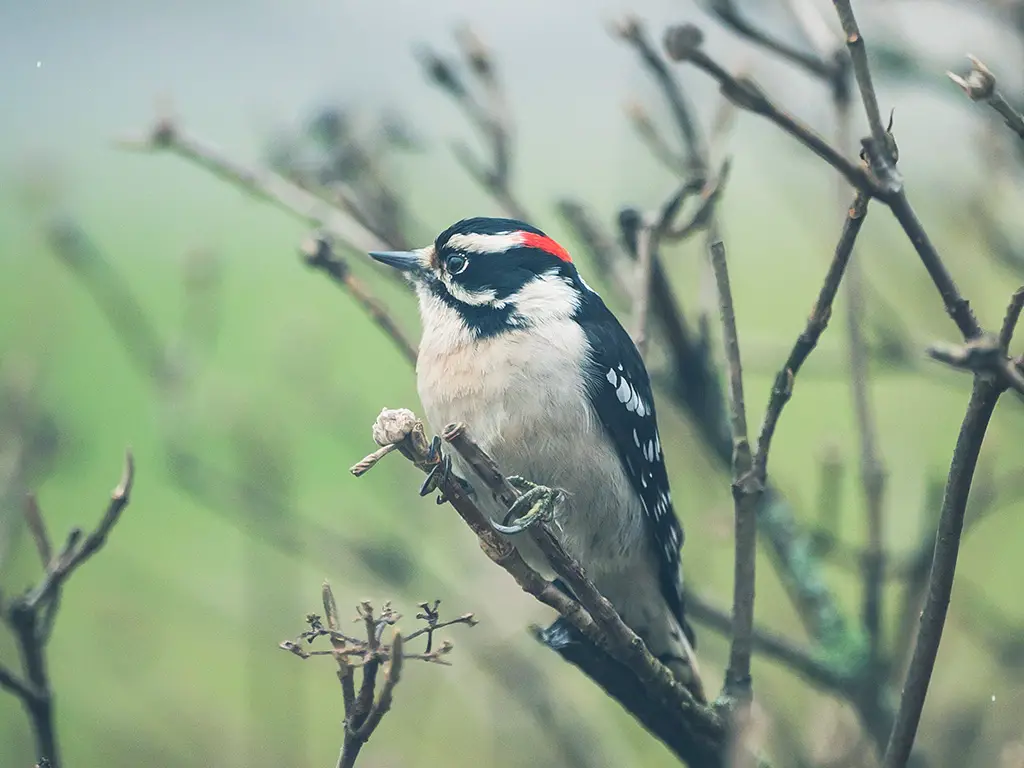
The Downy Woodpecker is a species of woodpecker that is the smallest in North America. It is typically between 14 and 18 cm in length.
This species of woodpecker is found in forested areas in the United States and Canada, except the deserts in the Southwestern states and the northern tundra. The Downy Woodpecker prefers to live in wooded areas, such as deciduous and coniferous forests.
They are also found in mixed woodlands, riparian areas, and forests with large dead trees.
They are hardy birds that can survive in a variety of habitats, from urban parks and gardens to rural farms and woodlands. Downy Woodpeckers are omnivorous, feeding on a variety of insects, nuts, seeds, and fruits.
They use their long, pointed bills to forage for food on trees, logs, and stumps. They also eat ants, beetles, larvae, and eggs.
They will occasionally visit bird feeders for sunflower seeds and suet. Downy Woodpeckers are common during the summer months but may migrate south in the fall and winter. They will often form small flocks, which travel together to their wintering grounds.
They are also known to roost in cavities during cold nights. Downy Woodpeckers are important to the ecosystem because they help to control insect populations. They also play an important role in seed dispersal, as they can move seeds and nuts from tree to tree.
Their presence is beneficial to other bird species, as they can act as a food source and provide nesting cavities.
| Kingdom | Animalia |
| Phylum | Chordata |
| Class | Aves |
| Order | Piciformes |
| Family | Picidae |
| Genus | Dryobates |
| Species | D. pubescens |
11. Gray Catbird
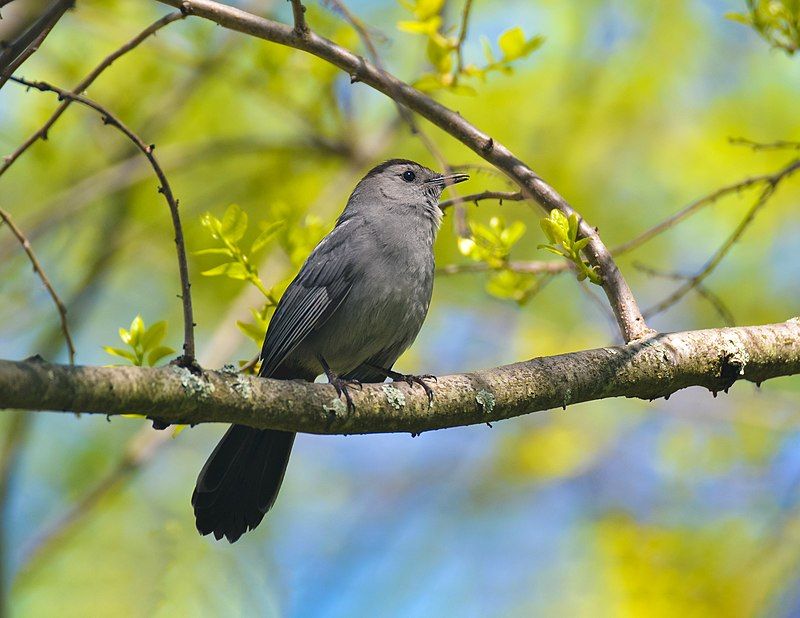
The gray catbird is a medium-sized bird that is found throughout North America and Central America. It belongs to the mimid family, which also includes mockingbirds and thrashers. The gray catbird is the only member of the genus Dumetella, which is where its name comes from.
It has a grayish-brown back, with a dark gray head, neck, and chest, and white underparts. Its tail is long and black, with white outer feathers that often have a faint, grayish tint.
The gray catbird is a common backyard bird, and can often be heard singing its distinctive, throaty song. It forages on the ground, eating insects, seeds, and fruits.
The gray catbird is a relatively tame bird, and can often be seen hopping around yards and gardens, picking up food. This bird is also an important part of the ecosystem, as it helps to control insect populations.
| Kingdom | Animalia |
| Phylum | Chordata |
| Class | Aves |
| Order | Passeriformes |
| Family | Mimidae |
| Genus | Dumetella |
| Species | D. carolinensis |
12. Northern Mockingbird
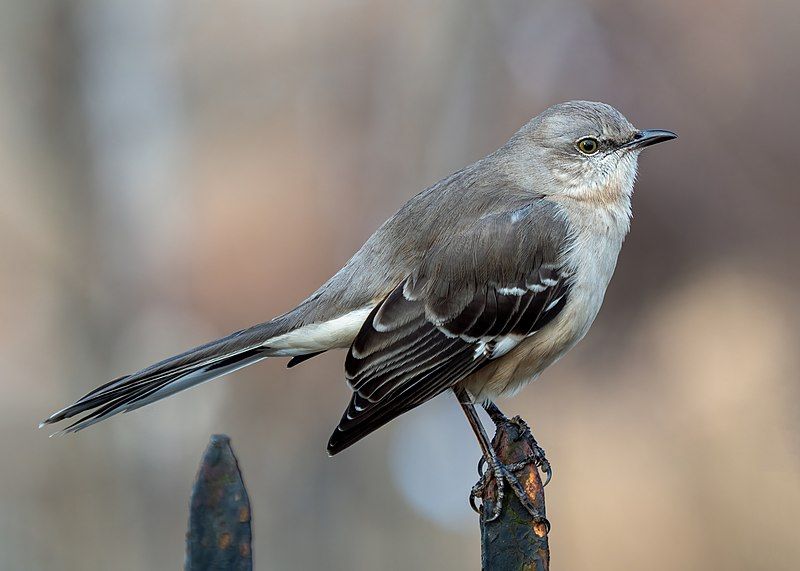
The northern mockingbird is a species of mockingbird native to North America. It is mainly a permanent resident, but under extreme weather conditions, some of the northern birds may migrate south. The northern mockingbird is an uncommon sight in Europe and is rarely seen there.
Its song, however, is known throughout the continent. The northern mockingbird is highly adaptable and is found in a wide variety of habitats, ranging from city parks to open fields. Its diet consists of insects, berries, seeds, and even small reptiles.
The northern mockingbird is an intelligent bird that uses a variety of vocalizations and techniques to find food. It is also known for its ability to mimic the calls of other birds.
13. American Crow
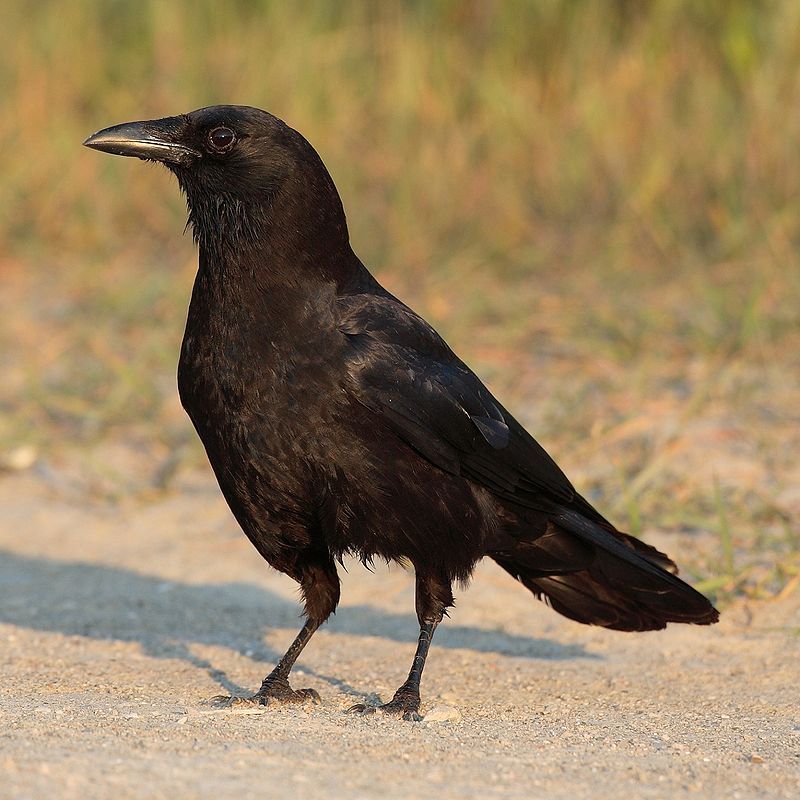
The American crow is a species of large passerine bird belonging to the family Corvidae. It is a widespread species across much of North America and can be found from the northern regions of the continent to the southernmost states.
The American crow is closely related to the carrion crow and the hooded crow, both of which are native to Eurasia. All three species occupy the same ecological niche; they are omnivorous and opportunistic, feeding on insects, earthworms, small mammals, seeds, and fruit.
They are also known to scavenge on carrion and are often seen near roadkill or other sources of food. American crows are highly social birds, often seen in large flocks. They are also highly intelligent and have been observed using tools to forage for food.
| Kingdom | Animalia |
| Phylum | Chordata |
| Class | Aves |
| Order | Passeriformes |
| Family | Corvidae |
| Genus | Corvus |
| Species | C. brachyrhynchos |
14. Cooper’s Hawk
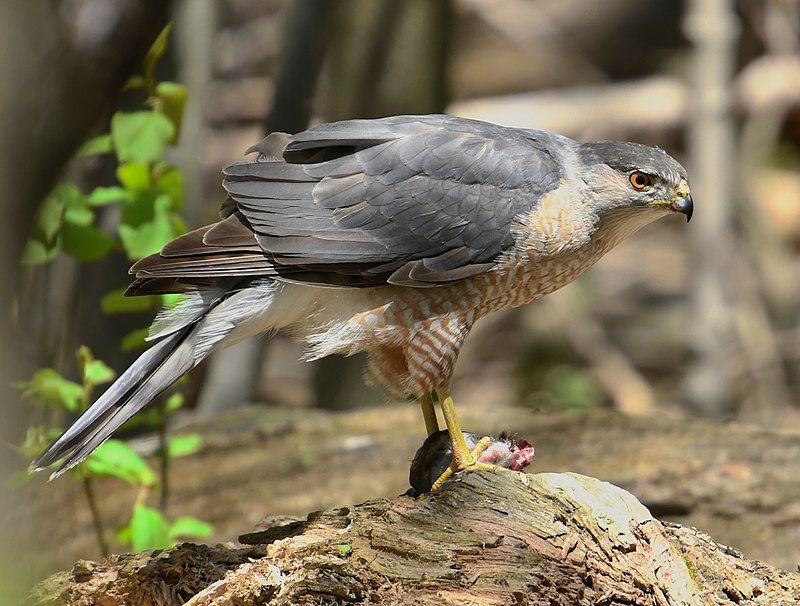
Cooper’s hawk is a type of bird of prey native to the North American continent. It is a medium-sized hawk, with a body length of between 15 and 25 inches, and a wingspan between 24 and 35 inches. They have a dark head and distinct reddish-brown barring on their chest.
Cooper’s hawks are found all over the continent, from southern Canada to Mexico. They can be seen in various habitats, including open fields, woodlands, and even urban areas. They feed mainly on small birds and mammals, but will also eat reptiles and amphibians.
They typically hunt by perching and waiting for their prey to come near, or by swooping down and chasing after them. In addition to hunting, Cooper’s hawks also build nests in trees, usually high up, and lay 4-6 eggs in each clutch.
They are an important species in the ecosystem, controlling the population of small mammals and birds.
| Kingdom | Animalia |
| Phylum | Chordata |
| Class | Aves |
| Order | Accipitriformes |
| Family | Accipitridae |
| Genus | Accipiter |
| Species | A. cooperii |
15. Wood Duck
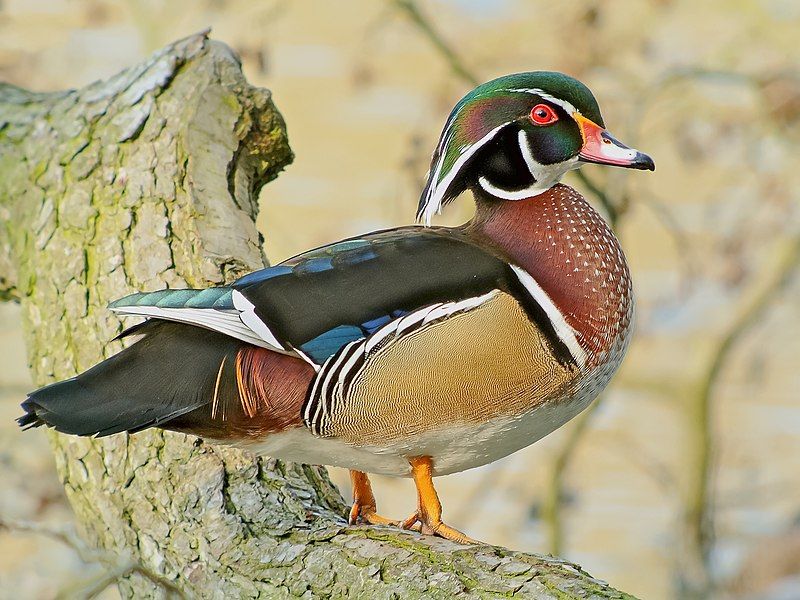
The wood duck, also known as the Carolina duck, is a species of waterfowl that is native to North America. It is a perching duck, meaning that it is well adapted to living in trees, with strong claws and a long tail to help it perch.
The male wood duck is particularly beautiful, with a mottled brown, green, and white plumage with a striking white stripe around the eye. It also has a distinctive crest of feathers on its head.
This bright, colorful plumage is one of the most attractive features of the wood duck, making it a popular species for both hunters and birdwatchers alike.
The wood duck is also an important species for conservation, as it is a keystone species in many wetland ecosystems, providing essential habitat for other waterfowl and migratory birds.
| Kingdom | Animalia |
| Phylum | Chordata |
| Class | Aves |
| Order | Anseriformes |
| Family | Anatidae |
| Genus | Aix |
| Species | A. sponsa |
16. Indigo Bunting
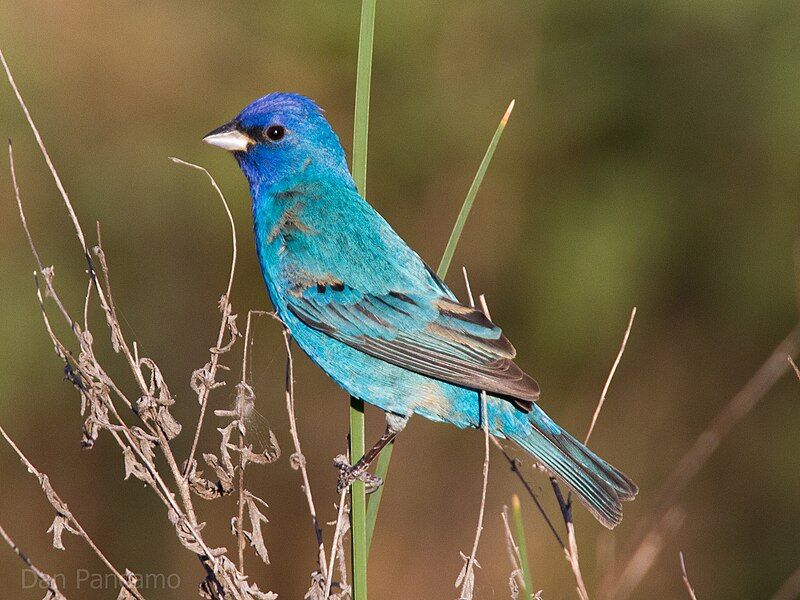
The indigo bunting is a small bird that belongs to the Cardinalidae family. This bird is migratory, which means that it moves from one region to another depending on the season.
During the breeding season, the indigo bunting can be found in the southern parts of Canada, all the way to the northern parts of Florida. In the winter, it migrates south to the northern parts of South America.
This bird is a nocturnal migrator, meaning it migrates during the night, using the stars to help it find its way. This helps the bird travel in a straight line, ensuring it arrives at its destination without getting lost.
The indigo bunting is an important species in the environment, as it helps to control the insect population as well as disperse seeds for other plants to grow.
| Kingdom | Animalia |
| Phylum | Chordata |
| Class | Aves |
| Order | Passeriformes |
| Family | Cardinalidae |
| Genus | Passerina |
| Species | P. cyanea |
17. Tufted Titmouse
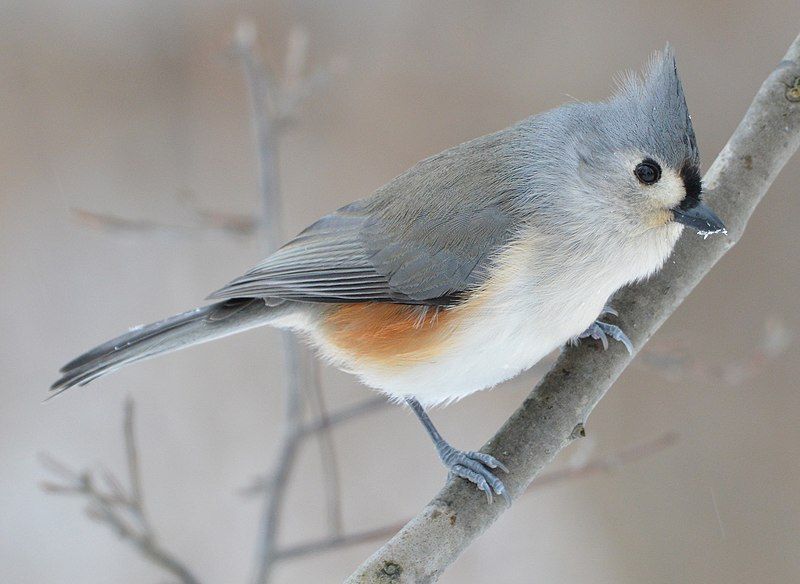
The tufted titmouse is a small songbird native to North America, belonging to the tit and chickadee family. It is mostly found in the eastern and central parts of the continent, but it can also be seen in some western areas.
The tufted titmouse is easily identifiable by its unique tuft on the top of its head. It has a grayish back and pale underbelly with a white throat. The black-crested titmouse is another species of titmouse that can be found in the southern and central United States.
While it was originally classified as a subspecies of the tufted titmouse, it is now considered its species, Baeolophus atricristatus.
This species has a black crest and a white throat, and it is usually found in wooded areas with dense vegetation. Both species of titmouse are social birds that live in flocks and communicate with each other using a variety of vocalizations.
They feed mainly on insects, but they also enjoy eating berries, seeds, and other small items. Tufted titmice often build nests in tree cavities or in birdhouses, while the black-crested titmouse builds its nest in the forks of trees.
| Kingdom | Animalia |
| Phylum | Chordata |
| Class | Aves |
| Order | Passeriformes |
| Family | Paridae |
| Genus | Baeolophus |
| Species | B. bicolor |
18. Broad-winged hawk
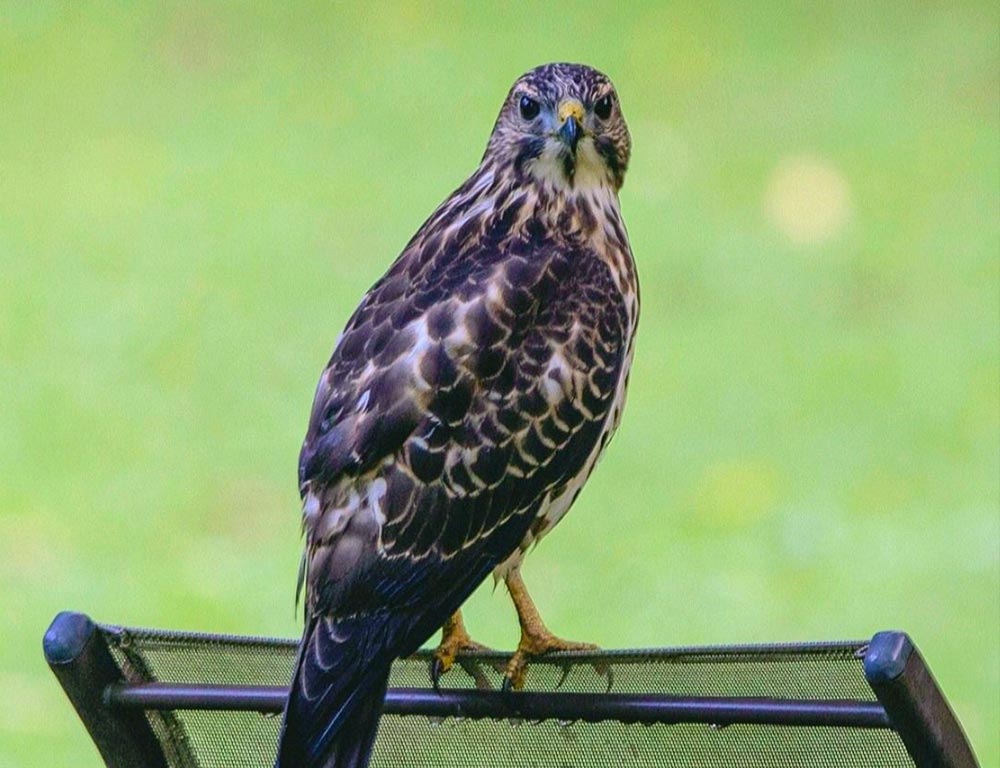
The Broad-winged Hawk is a species of hawk that is part of the Buteo genus. These birds inhabit various parts of North America, with some subspecies being found from British Columbia to Texas.
During the summer months, they can be seen in these areas, but they migrate south in the wintertime to places like Mexico, Central and South America, and even as far south as Brazil. This species of hawk is considered to be medium-sized, and they are known for their broad wings.
It is believed that the broad wings enable them to make the long and arduous journey from North America to the Neotropics during the winter months.
The Broad-winged Hawk is an important species of hawk, and its presence in North America is essential for the health of the environment.
| Kingdom | Animalia |
| Phylum | Chordata |
| Class | Aves |
| Order | Accipitriformes |
| Family | Accipitridae |
| Genus | Buteo |
| Species | B. platypterus |
19. American Goldfinch
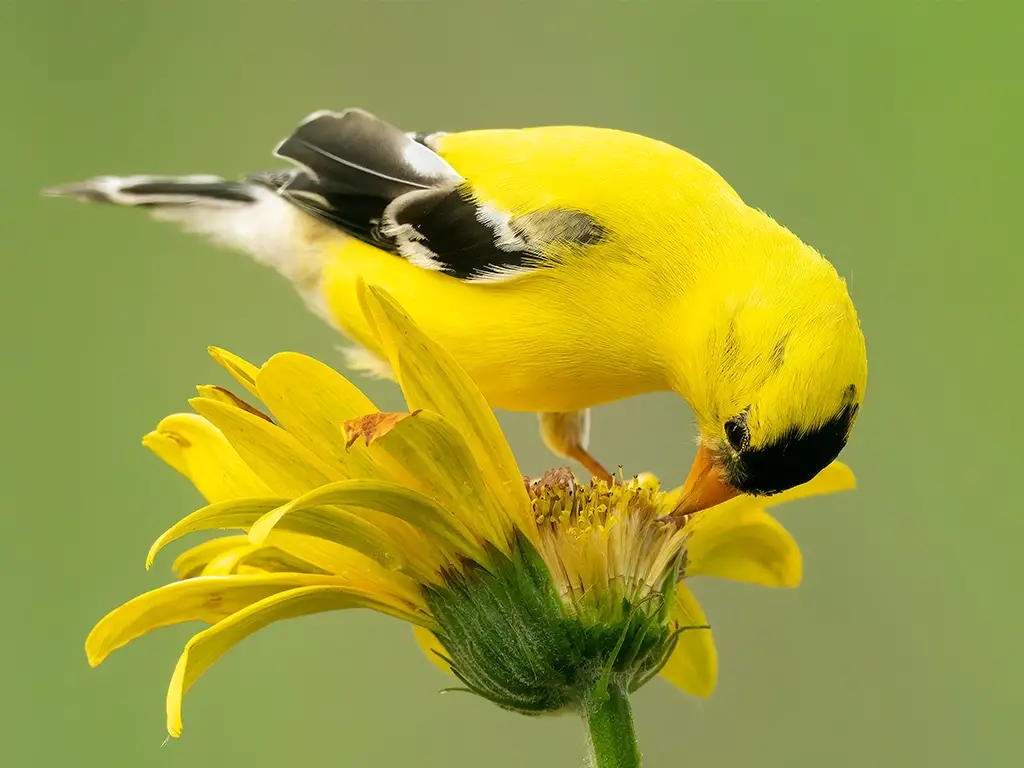
The American goldfinch is a small species of bird native to North America, belonging to the finch family. This species is migratory, meaning that it changes habitats depending on the time of year.
During the breeding season, which is typically between April and June, the American goldfinch can be found in the mid-western parts of Canada, ranging as far south as North Carolina.
During the winter, the American goldfinch can be found from just south of the Canada-United States border, and further south to Mexico. The American goldfinch is a colorful species, with bright yellow and black markings.
They are typically found in open woodlands, grasslands, and meadows, as well as other areas where there are plenty of trees and shrubs. They feed mainly on seeds, and can often be seen perched atop grasses and other plants, searching for food.
They are also known for their melodic songs, which can often be heard during the spring and summer months. The American goldfinch is an important species of bird and is an important part of many local ecosystems.
It is important to protect this species and its habitats so that future generations can enjoy its beauty and its song.
| Kingdom | Animalia |
| Phylum | Chordata |
| Class | Aves |
| Order | Passeriformes |
| Family | Fringillidae |
| Genus | Spinus |
| Species | S. tristis |
20. Cedar Waxwing
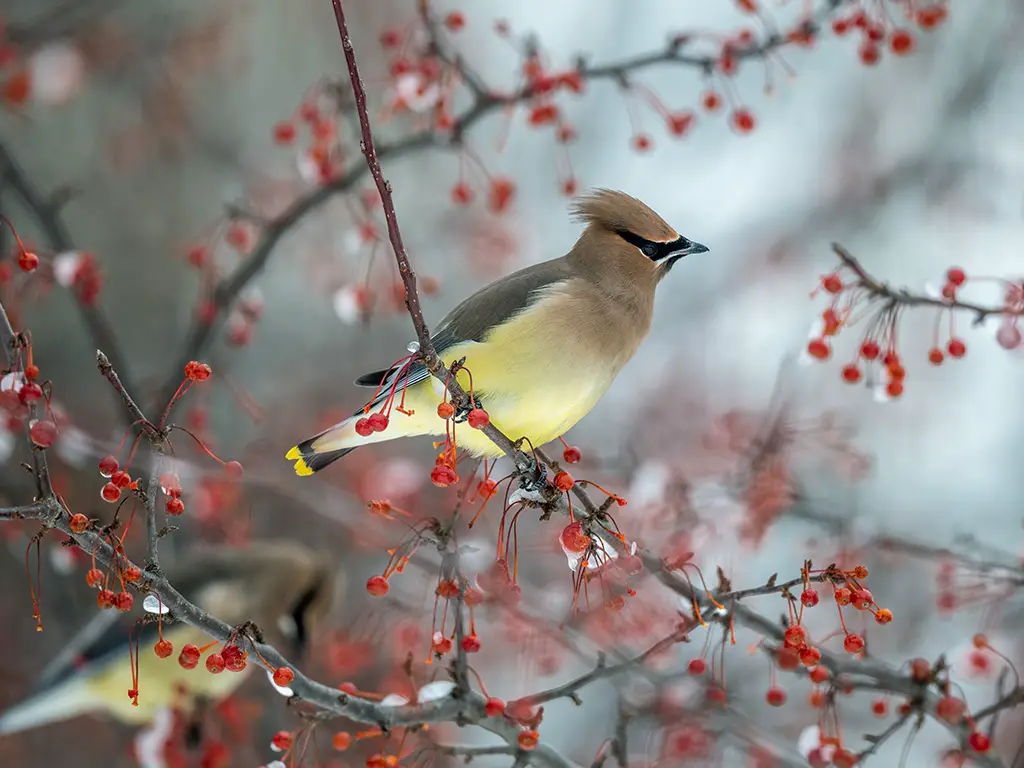
The cedar waxwing is a member of the Bombycillidae family, commonly known as the waxwing family. This family consists of passerine birds, which are a type of perching bird that includes sparrows, warblers, finches, and other songbirds.
The cedar waxwing is a medium-sized bird, with predominantly brown, gray, and yellow plumage. It is named for the unique bright red wax-like tips of its wings. These waxy tips are the defining feature of this bird and are what make it stand out from other passerine birds.
The cedar waxwing is a very social bird, often found in large flocks of up to 20 birds. In addition to its distinctive plumage, the cedar waxwing also has a wide variety of vocalizations, which it uses to communicate with other members of its flock.
Its diet consists mainly of fruits and insects, which it finds by foraging in trees and shrubs. Cedar waxwing is found in a wide range of habitats, from wooded areas to suburban neighborhoods.
It is a migratory species, that spends its summers in North America, and its winters in Central and South America. The cedar waxwing is an important part of the ecosystem, as it helps to disperse the seeds of native plants.
It is also an important part of the culture and folklore of many Native American tribes, who revere this bird as a symbol of renewal and good luck.
| Kingdom | Animalia |
| Phylum | Chordata |
| Class | Aves |
| Order | Passeriformes |
| Family | Bombycillidae |
| Genus | Bombycilla |
| Species | B. cedrorum |
21. Double-Crested Cormorant
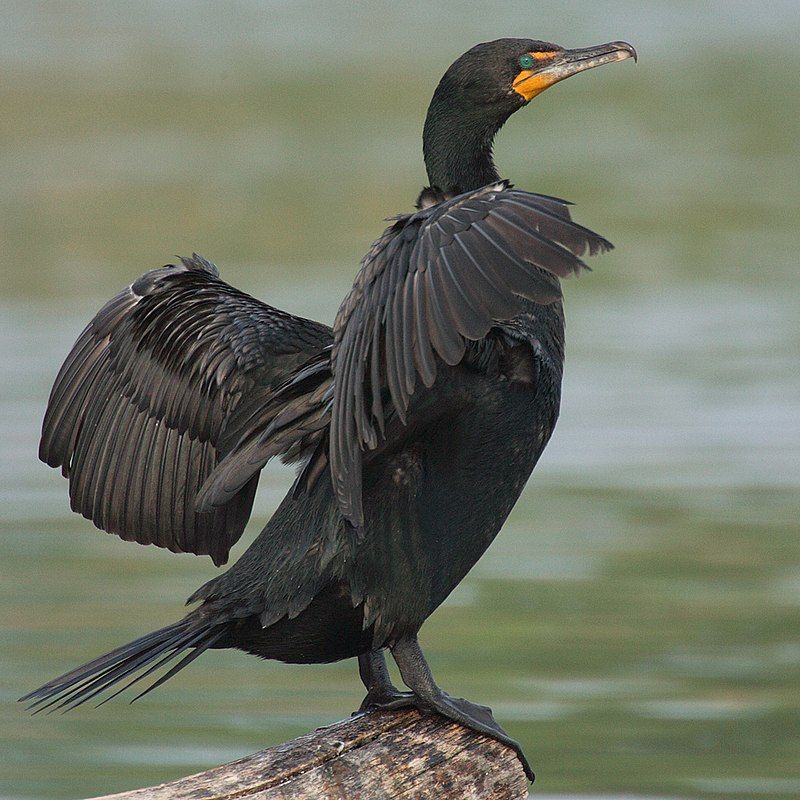
The double-crested cormorant is a species of water bird that belongs to the cormorant family. It is a common water bird found mainly in North America, inhabiting areas near rivers, lakes, and coasts.
These birds have an extremely wide range, stretching from the Aleutian Islands in Alaska, all the way down to Florida and Mexico.
This wide distribution has allowed the double-crested cormorant to become a very successful species, and they can be found in many different habitats around North America. These birds are usually dark brown with a yellowish patch on their throats.
They can reach up to 3 feet in length, and have a wingspan of about 4 feet. They are very good swimmers and can dive underwater for up to 30 seconds to catch fish. Double-crested cormorants are also very social birds and are often seen in flocks.
They build their nests in colonies, usually on cliffs or trees. Double-crested cormorants play an important role in the ecosystem, as they help to control populations of fish and other aquatic life.
They are also beneficial to other species such as terns and ducks, as they help to keep their populations healthy. The double-crested cormorant is an important species, and its wide range and success in North America is a testament to its importance.
| Kingdom | Animalia |
| Phylum | Chordata |
| Class | Aves |
| Order | Suliformes |
| Family | Phalacrocoracidae |
| Genus | Nannopterum |
| Species | N. auritum |
22. Red-Headed Woodpecker
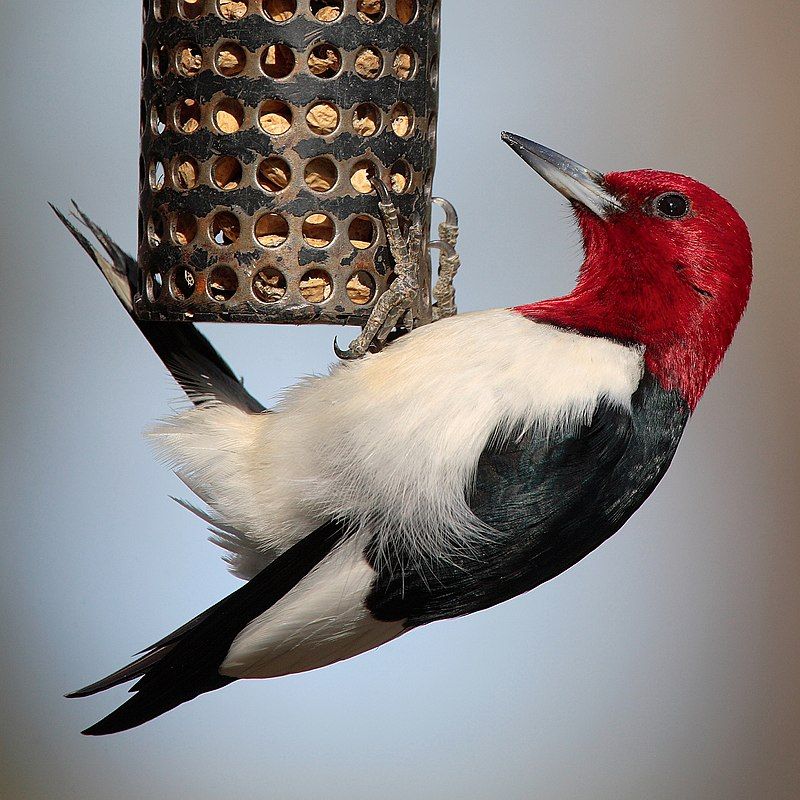
The red-headed woodpecker is a species of woodpecker that is found in temperate North America. It is a mid-sized woodpecker, with a body length of around 30 cm and a wingspan of around 38 cm. Its head is a distinctive bright red, while its back is black.
Its belly is white, and its wings have black and white stripes. The red-headed woodpecker prefers open habitats such as woodlands, savannahs, and farmlands. It is a widespread species, found in southern Canada and east-central United States.
During the breeding season, the woodpecker will choose a nesting site in an open tree, where it will create a cavity nest to lay its eggs. The red-headed woodpecker is an omnivore and will feed on a variety of insects, as well as fruits, nuts, seeds, and occasionally other small animals.
It feeds mainly on the ground and on tree trunks, using its strong beak to crack open nuts and dig into tree bark. The red-headed woodpecker is an important part of many North American ecosystems, helping to control populations of insects and other pests.
It is also a popular bird for birdwatching and is often featured on birding tours. Its brightly colored head and loud call make it a distinctive and attractive species.
| Kingdom | Animalia |
| Phylum | Chordata |
| Class | Aves |
| Order | Piciformes |
| Family | Picidae |
| Genus | Melanerpes |
| Species | M. erythrocephalus |
23. Black Vulture
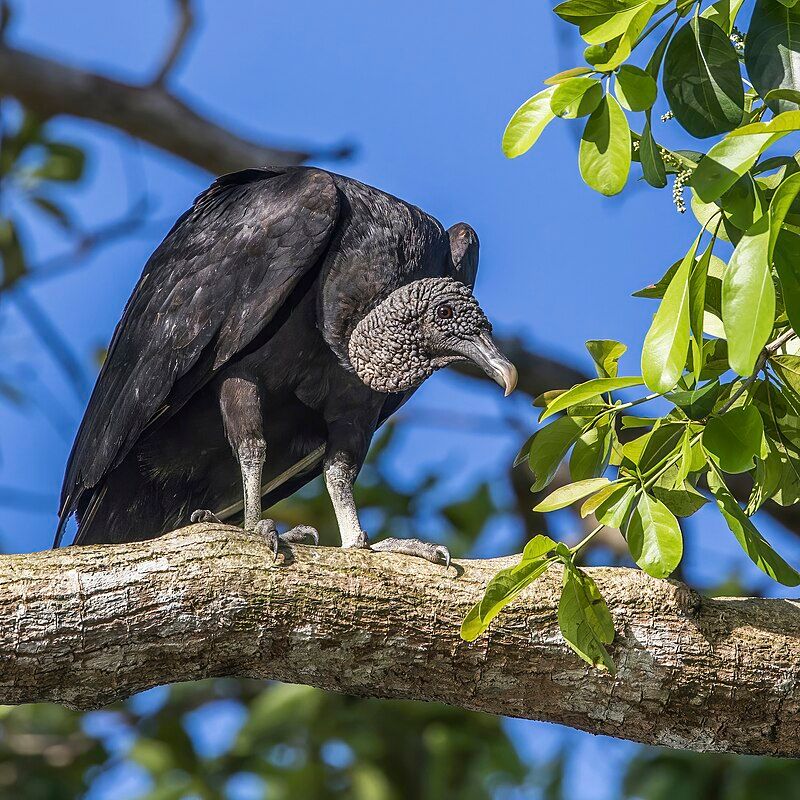
The black vulture is a large bird in the New World vulture family, with a wide range that extends from the northeastern United States to South America.
Also known as the American black vulture, Mexican vulture, zopilote, urubu, or gallinazo, this species is found in parts of Perú, Central Chile, and Uruguay. It is a scavenger, living on dead animals and garbage, and it is usually seen in groups.
Black vultures are generally black, with a white, featherless head and neck. Its wingspan is around five feet, and it has a large, hooked bill. It can be a nuisance in rural areas, as it may feed on livestock and crops.
Despite this, it is still an important part of the natural ecosystem, helping to keep dead animals from contributing to the spread of disease.
| Kingdom | Animalia |
| Phylum | Chordata |
| Class | Aves |
| Order | Accipitriformes |
| Family | Cathartidae |
| Genus | Coragyps |
| Species | C. atratus |
24. White-Breasted Nuthatch
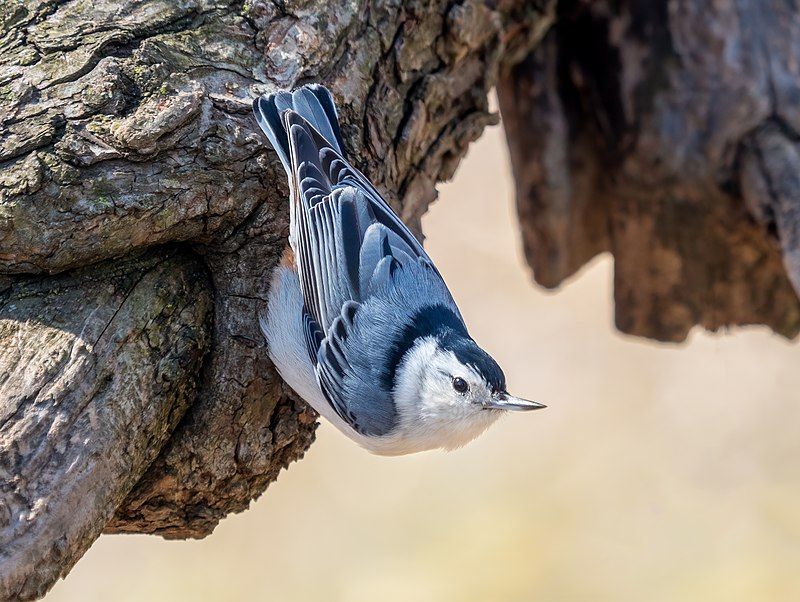
The white-breasted nuthatch is a species of bird native to North America. It is a medium-sized bird, measuring about 15.5 cm (6 inches) in length, and belongs to the family Sittidae, commonly known as nuthatches.
This species of bird is recognized by its distinctive white face, neck, and breast. The back and wings are blue-gray, while the belly is whitish. It also has a black crown and a white stripe over each eye.
The white-breasted nuthatch is an omnivore, meaning that it eats both plant and animal matter. In the wild, it feeds on insects, nuts, and seeds. It can often be seen clinging to tree trunks or branches while foraging for food.
It will even hammer into the bark of a tree to access insects and larvae hidden inside. It is an agile climber, able to hang upside down to reach food. The white-breasted nuthatch is a sociable bird and can often be found in small groups.
During the breeding season, it will build nests in cavities in dead trees or stumps. The female will lay between four and nine eggs, and both parents will help care for the young.
These birds are a common sight in woodlands, parks, and gardens, and they often come to bird feeders.
| Kingdom | Animalia |
| Phylum | Chordata |
| Class | Aves |
| Order | Passeriformes |
| Family | Sittidae |
| Genus | Sitta |
| Species | S. carolinensis |
Conclusion
Potomac Park is home to many different species of birds, making it a great destination for avid birdwatchers.
Its varied habitats and diverse bird populations provide a great opportunity to observe a variety of species in their natural environment.
Birdwatching has become a popular hobby in the park, and even if you’re not an experienced birder, there’s much to be enjoyed in this beautiful park.